




















































Sbeing able to turn a sow’s ear into a silk purse, as the saying goes. I am not one of them.

I have met those who can pick up a piece of driftwood, an old horse shoe, a scrap of rope or shard of broken glass and turn it into a work of art. They can knit and sew and crochet and make the ordinary extraordinary.
Alas, what I see in my mind’s eye and on occasion have tried to produce, could never be confused. The artistic arrangement I visualise invariably falls spectacularly flat.

I learnt very early on that handcrafts were not my strength and despite various attempts at pottery, macrame, knitting and other “handy”
skills over the years have never come up with anything worth keeping.
After completing a pottery course as a teenager, I presented Mum with a little jug I had made. She said she could see what I had learnt at the course – that it was best I forgot about pottery.
My excuse is being left-handed. While my sister still capably produces beautiful covered coat hangers and can knit, my poor mother gave up on teaching me crochet after five minutes. And my knitting never went much beyond uneven coloured squares.
Even those fancy wools that hide mistakes didn’t help. My daughter can testify to the scarf I made her in a burst of enthusiasm a few years ago. It was 30cm wide at one end, 20cm at the other and various widths in between. I have no idea how I managed that, but it did give us a good laugh.




Lorraine Page this month talks to those who have the ability to create beautiful items that are worthy gifts and memories worth keeping.


Me? I’ll head to the Christmas stalls of our many talented local craft groups and find a hand-made gift there. Happy Christmas dear readers.
Whittington Editor
there. ders

DISTRIBUTION ENQUIRIES distribution@yourtimemagazine.com.au. Or call 0419 746 894
PUBLISHER Michelle Austin 5493 1368. EDITOR Dorothy Whittington editor@yourtimemagazine.com.au
ADVERTISING ENQUIRIES 0438 717 210. sales@yourtimemagazine.com.au.
FOR DIGITAL EDITIONS AND MORE yourtimemagazine.com.au.
Your Time Magazine is locally owned and published by The Publishing Media Company Pty Ltd ATF The Media Trust (“the Publisher”). No part of this publication may be reproduced or copied in any form by any means without the prior written consent of the Publisher. The Publisher does not assume responsibility for, endorse or adopt the content of any advertisements published in Your Time Magazine, either as written copy or inserts, given such content is provided by third parties and contains statements beyond the Publisher’s personal knowledge. The information contained in Your Time Magazine is intended as a guide only and does not represent the view or opinion of the Publisher or its editorial staff. Professional advice should be sought before applying any of the information to particular circumstances. Whilst every reasonable care is taken in the preparation of Your Time Magazine, the Publisher and its editorial staff do not accept liability for any errors or omissions it may contain.
Igniting creative passions has its own reward. LORRAINE PAGE delves into the satisfaction of putting our hands to work and crafting something meaningful for generations to come.
have an ecological focus on repurposing, using up scrap fabrics or creating items to substitute disposable products.



Relaxing hobbies soothe the mind and give us a sense of accomplishment; however, the particular benefits of arts and crafts can go much further than fun and relaxation.
Research into the physical and mental health benefits of craft remains largely qualitative and based on self-reporting, but it’s reasonable to think that occupying ourselves productively means less time to dwell on ourselves.
When you make something, make it matter. It’s a slick slogan to follow, but that’s exactly what my friend Jullie did when she couldn’t bear to throw out a broken umbrella because she was still fond of its pretty pattern.
A dedicated crafter and keen upcycler, she belongs to a local sewing group where projects are birthed, ideas shared, and lasting friendships forged.
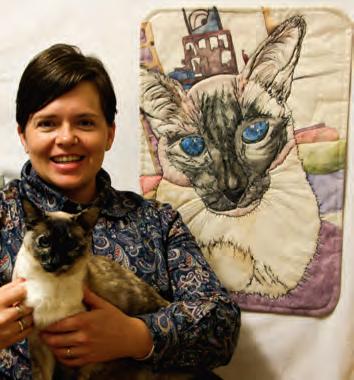


Using her creativity, sewing skills and the internet, she found a way to give her old umbrella a new use in life.
“It was as simple as googling, ‘how do I recycle a broken umbrella?’,” she says. “I landed on the website Cucicucicoo and found a pattern for a fold-up tote bag. I was even able to use the umbrella’s original fasteners to secure it.
“A lady remarked to me one day when I was out shopping, ‘I once had an umbrella like that!’.”
Most Cucicucicoo projects and patterns
Arts and crafts, including but not restricted to, knitting, crocheting, weaving, sewing, beading, quilting, needlework, textile arts and woodworking, can be a form of diversional therapy that help take our minds off negative thoughts, putting to flight the old saying that idle hands are the devil’s workshop.
MARTY Nuku creates mixed media story baskets and is affiliated with the Spinners, Weavers, Fibre Artisans of Ipswich, and Arts Connect Ipswich. She runs mobile workshops in the Brisbane, Ipswich and Gold Coast areas and supplies the basic tools of scissors, super glue, pliers, needles and rope.

Participants bring objects that can be woven, glued or stapled into their basket, such as a piece of clothing from someone who has died, trinkets or personal gifts, fabric from a wedding gown or veil, paper objects, driftwood or seashells.


“I have also made aromatic baskets and woven in sage and rosemary to evoke a memory for anyone housebound or in hospital,” Marty says. “It brings the outside in and evokes memories of smell. It’s a
Brisbane, Robyn Frank, says the quilts started for children being treated for cancer to accompany them when they came into hospital for treatment. The program progressed to throws made for children up to 18 years of age who are in and out of hospital regularly for treatment.
When Daniel was just seven years-old, he was in the fight of his young life, his mother, Fran, never far from his side.
Diagnosed with a high-grade cancer, he spent more than a year as an inpatient at Brisbane’s Royal Children’s Hospital.
In the first month of his hospitalisation, he received a throw quilt from Project Linus, decorated around the edges with colourful dinosaurs, the stuff of dreams for Basket maker Marty Nuku

tactile basket that appeals to all the senses.
“The basket starts off structurally as a belly button and when we think of the womb as being a vessel to carry a baby, a basket is an extension of the whole idea of carrying something precious.”
Basket making takes Marty into her quiet zone.
“It’s a real calming influence,” she says. “I always use my hands to alleviate stress or to cope with the challenges of the world.”
She makes to order seasonal baskets and all her baskets are functional and aesthetically pleasing as a stand-alone art piece.
PROJECT Linus started in America in 1995 making blankets for children in need, taking its name from Linus, the blankethugging character in the comic series Peanuts.
Spokesperson for Project Linus
a little boy. The gift sweetened Daniel’s long stay in hospital.
From the outset, Fran says, her son loved the quilt but couldn’t quite get his tongue around the “nigh-nee-naws” (dinosaurs) that roamed over it.
As he grew older, Daniel couldn’t remember much of the intensive treatment he received as a child, but the quilt would often be found wrapped around him when he was watching television.
“When he did go home the quilt was around the home all the time and would always go with him when he returned to hospital for further treatment,” Fran says. “It was a security thing for Dan.”
Daniel made a full recovery and today is an athletic, 29-year-old man who has followed his parents’ footsteps into the nursing profession. He’s also the proud keeper of his quilt.
Project Linus also makes quilts for Be Uplifted Inc, a breast cancer charity that supports women through their breast cancer journey to the end, or into remission. Volunteers are mostly lifelong sewers who quilt purely for relaxation and the joy of giving.
Between the two charities, 1200
throws were made last year, half going to children deemed at risk by the Queensland Government and taken into foster care.
RESOURCES available to crafty minds in brick-and-mortar shops or online are seemingly endless, allowing crafters to personalise their artistic expressions, discover and experiment with new techniques or revive and tweak traditional ones, all the while creating unique repositories of treasured memories.
Julie Tasker learnt to sew on a plastic toy sewing machine that could only punch holes in paper. As her mother sewed on a domestic sewing machine, Julie sat at a mini-table beside her ‘stitching’ away contentedly.
She made her own clothes at an early age and caught her mother’s addiction to patchwork and quilting.
She has never stopped creating and uses the techniques of traditional quilting with various embellishment styles applied to create stunning art quilts that are highly personalised and meaningful.
One of her preferred techniques is thread sketching to enhance details of an art quilt by drawing an outline, shape, design or picture with a sewing machine over a sketch marked out with an erasable marking pen.
“A significant photograph or painting that has meaning for the maker can be the inspiration for an art quilt design,” Julie says.
“Anyone can be an art quilter by putting at least two layers of fabric together, choosing a pictorial, landscape or abstract design of your own, or using somebody else’s pattern.”
Born and raised in Zimbabwe, she is drawn to depicting nature and animals.
She is an active member of Queensland Quilters Art Quilters, a special interest group of Qld Quilters Inc dedicated to promoting art quilts through experience and inspiration.
WHEN Adele Hartley was nine, she could whip stitch by hand (overcast) the ends of seams to stop them unravelling.
Her mother was a dressmaker and Adele’s job was an essential skill in the days before the zigzag stitch was added to domestic sewing machines.
She has fond memories as a child growing up in a remote area of Natal in South Africa, sitting around the fireplace listening to the radio with her parents and brother, everyone knitting. She married a game ranger and as a family they lived in the game reserves in Natal until they emigrated to Australia in the 1980s.
A lifelong crafter, in recent years her passion for authenticity has steered her towards doll making. Through a labourintensive process, Adele transforms a blank manufactured kit into a reborn, lifelike human infant that she has seen pull a memory trigger in a buyer.
“I have one client in Toowoomba who says their doll looks like their nephew who has just been born, dimples and all,” Adele says. “Some people have three, four or five dolls that they change through the day and put to bed in pyjamas at night. Just to sit
and hold one is something each person needs to experience for themselves – the comfort of holding that doll that’s just like a baby.”
Some of Adele’s dolls take pride of place in aged care homes in the Lockyer Valley, calming residents with dementia and controlling blood pressure in others.



Wherever you are in your craft journey – a beginner or an aspiring expert – there are craft groups and organisations around the country to get you started on making something that really matters.
Australian Sewing Guild – aussew.org.au Social sewing groups; online sewing workshops; library of sewing resources

The Embroiderers’ Guild, Queensland Inc – www.embroiderersguildqld.org.au
Extensive library; classes in modern and traditional embroidery
Queensland Quilters Inc – qldquilters.com Networking; workshops for a range of craft abilities; special interest groups; library Arts Connect Inc – artsconnectinc.com.au
Supporting, showcasing and connecting artists on the Sunshine Coast Officeworks – officeworks.com.au
Derwent Inktense pencils, water-soluble ink-based pencils, permanent once dry, ideal on fabric
Everything Fabric, Hervey Bay –everythingfabric.com.au
Australian owned online patchwork and sewing supplies
Patchwork Angel, Forest Glen –patchworkangel.com.au
Shop in person and online for all patchwork, sewing and stitchery needs; huge range of fabrics; patterns; advice and classes
Make it Sew, Boondall – makeitsew.online Shop in person and online; weekly classes; themed and quirky fabrics; sewing patterns; craft and embroidery materials
Have your say. Send letters to Editor, Your Time Magazine, PO Box 6362, Maroochydore BC 4558 or email editor@yourtimemagazine.com.au
As an adopted from birth child (born 1963), I read with interest last month’s Your Time article concerning relinquishing mothers. Some interesting issues were raised.
How does Trish Large want the law regarding veto changed? Surely not by having it removed or made redundant as this would be denying individuals the right to privacy.
Some language in the article was highly judgemental – “snatched”, “massive long term problems”, “bullied”, “layers of pain” – where is the data substantiating such language?
Speaking of data, the claim that “most reunions fail” does rather hinge upon definitions of failure (and brings into question the efficacy of any infra-structure designed to assist people with such reunions).
I am by no means asserting that deceptive practice, lies, and behaviour based on questionable social considerations were not
endemic, it can however be asserted that “protection” may have been a reason behind much behaviour.
The facts regarding my own story involve researching and eventually being able to contact my relinquishing mother in the early 1990s, maintaining a close relationship with her by telephone and thoroughly enjoying the laughter and stories we share.
We have met twice and appreciate the contact we have.

The Sunshine Coast is about to launch an Adoptees Connect Inc group. The inaugural meeting is on December 18 in Maroochydore.
I hope that this group will help to provide support for the many people affected by adoption.


A follow-up to the “Stolen Babies” article may involve reviewing the motivations and hopes of this new group.
Mark Brennan (name on my original birth certificate).
December 13, 1642 – Dutch navigator Abel Tasman of the Dutch East India Company discovers New Zealand.
December 21, 1846 – Anaesthesia used for the first time in Britain when Robert Liston amputated the leg of a servant in an operation at University College Hospital, London.
December 17, 1903 – Orville and Wilbur Wright achieve the first powered, controlled flights, the longest lasting about a minute.
December 15, 1905 – Women win the right to vote in Queensland elections.
December 19, 1930 – Perth is linked by telephone to the rest of Australia.
December 29, 1940 – German aircraft drop thousands of bombs on London, causing the worst fire since 1666.
December 31, 1964 – Donald Campbell sets a new land s peed rec ord of 442 km/h at Dumbleyung_Lake, WA.
December 3, 1967 – The first successful heart transplant performed by Dr Christiaan Barnard at Cape Town.
December 2, 1972 – Gough_Whitlam becomes prime minister, leading the first Labor government in 23 years.
December 9, 1992 - Buckingham Palace announces the separation of Prince Charles and Diana Princess of Wales.
with PennyI HAVE adjusted my times for being in the garden to very early morning and late afternoon to avoid sunburn. The wet year has seen a few plants, including succulents and geraniums rot or have rust. Pop some new cuttings in.
The geraniums I bought at the Geranium Society in Toowoomba are doing well with some doubles, bicolours and variegated foliage.
There is celery, strawberries, lettuce and spring onions in the vege patch, with tomatoes and cucumbers nearly ready.
So many flowers are out – roses, snapdragons, pansies and petunias. The gladioli corms I bought at the Nambour Garden Expo have excelled with beautiful purple, green and yellow blooms. The next lot will flower just before Christmas.
Cleomes are great value easy to grow annuals that flower for months in pink, white and purple. Just sprinkle the seed around and lightly cover for an amazing display.
Keep the fertiliser and water up to citrus as it is now setting fruit.
Alstroemerias or Peruvian lily are doing well, with gorgeous spotted flowers in many colours. These are an excellent long-lasting cut flower. Remember to pull the stems, not cut them.
I would like to wish one and all a merry Christmas and happy gardening in the new year.
Penny Hegarty

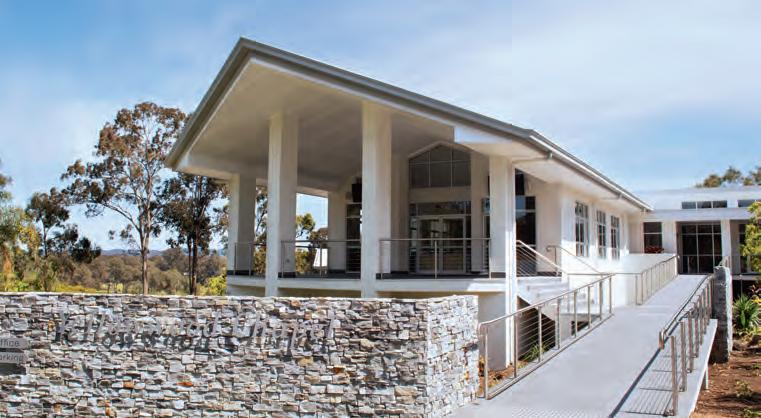








In 2012, having been lost for over 500 years, the remains of King Richard III were discovered beneath a car park in the UK city of Leicester.

The search had been orchestrated by an amateur historian, Philippa Langley, whose unrelenting research was met with incomprehension by her friends and family and scepticism by experts and academics.
The Lost King, is the life-affirming true story of a woman who refused to be ignored and who took on the country’s most eminent historians, forcing them to think again about one of the most controversial kings in England’s history.
The Lost King stars Sally Hawkins, Steve Coogan and Harry Lloyd and opens in Australian cinemas on December 26.
Your Time has five double passes to The Lost King to be won.

Simply email editor@ yourtimemagazine.com.au with a sentence about what you think you would like about the film, and your postal address*, before December 16.
Passes will be mailed to winners in time for the opening of The Lost King release on December 26. Passes are valid for most cinemas.
*Address is required to post tickets to the winners only, and emails are deleted when the competition closes.
silently. After I migrated to Australia and lived in Darwin it was the heavy smell of humidity in the wet season that told us that Christmas would be coming soon.
Even though the candles had a tendency to melt in the tropical heat, they still announced that Christmas had arrived. If it rained, the “holy night”’ became even more special, and closer to the real thing.
Christmas is also a highly emotional time, more than at any other great religious event.
The sound of church bells, carols, Christmas trees – even if they are fake – can all play a role in stirring up long-hidden feelings of sadness, loss, hurt, homesickness, hopelessness.

Friendships are made and friendships are broken, marriages break up, children leave. However, it is also a time of reconciliation.
This song, played in most countries in the world, even resounded on our sunbaked beaches in Australia.
I am not interested in the Christmas jingles or the wish list for presents. These things are great for children. It makes it a very special time of year whether they still believe in Santa Claus or not.
For them, Christmas presents are certainly the main part of Christmas Day.


Although I am now elderly, I still have wishes, fervent wishes, which have nothing to do with the banality of presents.
 by Cheryl Lockwood
by Cheryl Lockwood
CHRISTMAS! Probably the most joyous time of the year and I do hope that all my readers will feel the happiness and blessings of this season.
I have always loved Christmas, loved the anticipation when I was a child, loved that special feeling which seemed to be in the very air I was breathing.
In Germany, where I grew up, it was the smell of green, live Christmas trees, the cold scent of snow falling
Maybe we think about friends and relatives with whom we no longer have a close relationship or who we have neglected and ignored during the year.
Maybe we mend broken fences, break stupid silences. A simple phone call might heal hurt and resentment.
Then there is all the sentimentality of the season with sugary Christmas movies or listening to Bing Crosby singing White Christmas on the radio.

I wish for peace, I wish for healing of the world, I wish for sanity in our dealings with climate change, I wish for the ending of famine, I wish for wise and responsible politicians. Most of all, I wish for respect and love for one another.
Maybe I am a dreamer like in John Lennon’s Imagine, and if so, I don’t ever want to lose that dream.
In spite of the platitudes and banalities, the tinsel and silly carols, Christmas is still a wonderful time of celebration.
So many feelings, maybe tears, lots of laughter and happy time, whatever it is, may your Christmas be special and love all around you.
AS THE end of another year approaches, it’s time to ramp up the festive cheer. Time to dust off the Christmas decorations, assuming you’ve taken them down from last year, and wonder where on earth another 12 months went.
I used to love the silly season build-up, but as it feels like over-commercialised celebrations blur into one another, my enthusiasm is waning.
The beginning of the month sees me excited over stringing up lights and straightening the scrunched-up branches of my fake tree. I happily unpack trinkets, baubles and tinsel from the boxes they have slept in since January, delight in overloading the tree with colour and risk life and limb draping the verandah with lights.


If staying in your home is important to you, we can help.

Help with housekeeping, a lift to the shops or someone to mow your lawn could be just that extra support you need so you can pursue your interests and live your life on your terms.
you can stay in your home, connected with your local community and in control of your life.
More and more, I look forward to the end of the month when I clean up and pack the lot away!




















Much of the sparkle has little connection to the birth of Christ and I daresay, there are generations who are oblivious to the true meaning.














Sunday School attendance was more important during my childhood and we came away armed with paint-daubed creations, which were mostly hung at the back of the tree, the front being reserved for the worthy store-bought decorations.


When we left home, Mum dragged out the Christmas trimmings for her grandchildren, who started to add their own lovingly made bits and bobs. Nothing was discarded. Eventually, there were more decorations showing than greenery. There was a wooden decoration which read “JOY”. As it twirled on its little string, one of the granddaughters was heard to ask, “Grandma, what’s YOJ?” We referred to it as “YOJ” from that point and it took pride of place, front and centre of the tree.

My favourite tradition was when Mum would bundle us in the car and drive around the neighbourhood for what we called, “Christmas light spotting”. Unlike now, when houses are hung with enough lights to be seen from outer space, a string of coloured lights was a big deal.

We would comb the streets peering into house windows. This sounds both creepy and suspicious, but our intention
was to spot trees adorned with lights.
Every year, we drove past the one house in our country town which had a whole row of coloured, incandescent bulbs around its gutter. We declared the owners to be wealthy and I aspired to one day be rich and have lights on my house. Of course, I have since achieved this goal, well one of them anyway.
By the time my children were old enough to appreciate houses covered in garish lights, we had gathered quite a few. Each year, we laid out our ever-growing strands to painstakingly check and replace tiny, blown bulbs.
Remember when one malfunctioning light meant a whole section would be dark? The process of finding the faulty culprit took some patience. Along came bright, durable LEDs and I expect many kilometres of old lights went to landfill.
When extra decorations were needed, I covered tiny boxes with scraps of paper and ribbon to fill the gaps on the tree and make a pretty display for my children.
I will unpack those storage boxes again this year because as I look back, I see the memories of Christmases past are hard to shake. Among the commercial hype and the shiny things, for me the season was always surrounded by loving family.
I know that for some, this is not the case. If a little bling brings a smile, I say bring it on. Blessings to one and all for Christmas and a happy 2023!
Reindeer are herbivores. Most reindeer enjoy eating apples and bananas, so leave some out for them on Christmas Eve!


As a protest against frivolous spending and the madness of Black Friday sales, Cards Against Humanity removed its flagship product from its website on Black Friday in 2014 and replaced it with something described only as a “bulls#*t box”. The $6 box sold more than 30,000 copies on the day, but when customers started receiving the product they found it was literally just that – they had bought themselves a $6 box of bull poo. True story!





The longest recorded flight of a chicken.

– Confucius



The ‘Keep Calm and Carry On’ poster was originally created by the British Government in 1939 to help the morale of the British Public before the beginning of the Second World War. The slogan was barely known in the decades past and almost lost to time until one was found and displayed in an English bookshop in 2000. Since then it has become a popular poster, with many different iterations being used for a multitude of situations.
Companies have begun cashing in on its popularity, selling merchandise of all kinds with the famous line.
As far back as 2011, the American Academy of Matrimonial Lawyers was reporting that one in three divorce filings in the US included the word ‘Facebook’. No doubt that number has risen since. “We’ve had instances where they pull up Facebook in the course of a deposition,” divorce lawyer Marian Rosen told ABC News in America. “Once it’s out there for the world, it’s very difficult … to erase from the past. There are going to be trails that can be followed.” The number of bones in your foot.
“It does not matter how slowly you go as long as you do not stop.”
Memory is complex but we do know that it involves different parts of the brain. KAILAS ROBERTS reports on the brain structure that can be influenced and, if nurtured, make recall a lot sharper.
The structure known as the prefrontal cortex sits, not surprisingly, at the front part of the brain.
It is especially well developed in humans and probably has contributed to our species becoming the most successful on the planet (depending on how you measure such things I suppose!).
It allows you to read social situations and know how to respond. It helps you stop acting on impulse and engaging in harmful and unwise behaviours. It also is critical for problem solving and organising yourself.
When it comes to memory, the prefrontal cortex also plays a crucial role.
First, it is the part of the brain that allows you to hold things in mind.

Without this so-called working memory, conversations would be very difficult as you would not remember what is being said to you in the moment to be able to formulate a response.
Let’s say you are with a garrulous friend who is telling you about three or four things in a bit of a rambling monologue. Working memory allows you to hold in mind all these different






may be nothing there to retrieve in the first place and is a hallmark feature of Alzheimer’s disease.
Poor retrieval means it is harder to recall things, especially when under pressure, but they often come with time, especially if you are given a hint.
Tip of the tongue moments are an example of this. After the relevant moment is gone, the word then commonly appears in your mind.

There are many things that affect the function of the prefrontal cortex.

Exercise, one of my favourite interventions for brain health, can also be very beneficial – improving blood flow, oxygenation, and nutrient supply.
Then there is engaging in activities that use the prefrontal cortex.
Research exists that suggests that there may be benefits using certain computer games and apps (though this is not without controversy).
Everyday tasks such as cooking also provide a great workout for this part of your brain.
Socialising – the tos and fros of conversation – is also a helpful tool that has a lot of other benefits.
things so that you can talk about them (assuming you get a chance to respond!).


The prefrontal cortex also underpins your ability to retrieve long-term memories. These are memories that are already stored in circuitry in your brain. They have been encoded and laid down, and just need to be retrieved to be brought to mind.
Getting older unfortunately does naturally lead to a reduction in its efficiency, and conditions that cause dementia can affect it, but there are also very much reversible “insults” that can impair its ability.
These include acute and chronic stress and depression, poor sleep and overuse of alcohol and other sedative drugs. With help, these problems can often be overcome.

Problems in this area are distinct from those where the initial laying down and storage of the memory is impaired. This latter situation means that there

Meditation and mindfulness may be especially helpful for some, and longterm meditators have been shown in studies to have better prefrontal cortex function.
Kailas Roberts is a psychogeriatrician and author of Mind your brain
The Essential Australian Guide to Dementia now available at all good bookstores and online. Visit yourbraininmind.com or uqp.com.au
So, don’t forget this important part of your brain and do your best to optimise its function. In short, be up-front! At Algester Lodge,

Another year passes and as families come together for Christmas, time might be starting to tell on much-loved faces. KENDALL MORTON recommends treading lightly when raising the subject of home care.

Christmas brings families together. If you are not living near your parents, it’s likely that you’ll see changes in them. They may look thinner or seem forgetful. Siblings may whisper, “don’t you think mum’s looking frail?”

You may think your parents need home care. In your opinion, their lives would be socially richer. They would be healthier and safer.
But stop for a minute. I’d advise to wait until Christmas is well and truly over.
This is a difficult conversation that many adult children will have with aging parents and it’s better left for a less emotionally loaded time of year.
When the time comes, here are some general guidelines to help all parties discuss the idea of home care for mum and dad.
1. Rather than stressing what you want and jumping into fix-it mode, ask your parents what they want. Listen to their wishes
and fears and go from there.
2. Stay positive. Praise your parents for the way they have managed their retirement years.
3. Know that talking about change is hard. Your parents may think that accepting help means they have failed. Help them to reframe this. Home care is a safety net that allows them to maintain control and independence for longer.
4. We all take risks and your parents have the right to take risks as they age. Knowing the risks and ramifications is the key.
5. Help them state their vision clearly. For example, it could be to live independently and safely at home and continue to enjoy time with friends, family and neighbours.
From there they can look at the specifics: For instance, “does
climbing up the ladder to put up the Christmas lights, help me to meet this vision?” Some actions will put that vision at risk and can be dropped without an argument.
6. It can be helpful to tell a story. You may have friends whose parents can speak positively about home care.
7. Use the research. Macquarie University researchers found that for each hour of care a person received, they were 6 per cent less likely to be moved into residential care. So, if your mum or dad accepts just five hours of help a week, their chance of staying at home improves by 30 per cent.
8. Start small. Ask your parents about one task they would be prepared for someone else to do on a trial basis. This way they can test out services without pressure. For instance, they may try home-delivered groceries for a month.
9. Choose your time to talk. It
may be more effective to say things as the jobs appear, such as when you see dad sweeping up leaves and puffing and huffing.
10. Be respectful of your parents’ wishes and be prepared to have the same conversations again over time. By sowing the seeds, they can think about ideas, collect information from peers or their doctor and stay in control.
11. A new diagnosis or a trip to hospital can be an opportunity to reassess your parents’ needs with them and help them plan for the future. Health professionals may have valuable information to contribute at this stage.
Remember change happens slowly. Do not turn all your conversations into care conversations. Let go of the small things and enjoy your time with mum and dad. It’s precious.
Kendall Morton is Director of Home Care Assistance Sunshine Coast to Wide Bay. Call 5491 6888 or email kmorton@ homecareassistance.com
Please call Jen on 0414 576 230 for a free, no obligation chat about how we can assist you.


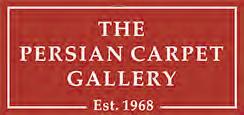

Persian carpets are each uniquely handmade, with craftsmanship and skill being passed down through generations. What makes our rugs different is their attention to intricate detail, history and above all, quality. Come see us and learn why our Persian Carpets truly are the superior choice.
All of Persian Carpet Gallery carpets are supplied with certificate of originality. You can also exchange the rugs at any of our stores across Australia. We have the most amazing rugs from traditional Persian to modern.



Ford’s latest family of Ranger utes and Everest wagons is handsome and handy. BRUCE McMAHON ponders what could have been if other major manufacturers had established ute and SUV centres in Australia.
Kalgoorlie with comfort and competence.


A little bit wider than predecessors and with revised suspension, fresh engine options plus a swag of modern technologies, these Ford utes and wagons are very much on the money – if a tad dearer than before.
Rangers start at $35,930 for a basic two-wheel drive ute and end up at $85,490 for the off-roading outlaw Raptor model, a four-door, four-wheel drive performance machine.
The very civilised 4WD Everest wagons start at $57,990 and work up to $76,880 for the Platinum version.
shopping lists if chasing a well-sorted family wagon with proper four-wheel drive ability. It has the chassis, clearance and 4WD system to tackle the roughest of tracks while maintaining excellent on-road manners and composure. Towing capacity remains at 3500 kg.


Among the utes, there’s a wide range of choice between variants and options, easy to custom-build your own Ranger.
While the increase in cabin and tray widths is much appreciated, Ford’s new drivetrains are smooth and rarely found wanting.
Imagine if, instead of building cars, manufacturers in the 1980s had dedicated Australian operations to engineering and designing workhorses and off-roaders. The talent’s obviously here, “real-world” testing conditions are here, and arguably the world’s most finicky customers are here.
Mitsubishi would be sorting out Tritons and Pajeros for the world, Holden could have kept on partnering with Isuzu, and Toyota Australia would be having a
field day engineering that crowd’s long list of work and play horses.
Others, such as Mazda and Nissan, may have joined this mob; maybe Europeans would have piggybacked off the Australians, as Volkswagen has done with this new generation of Fords.
So, the 2023 Rangers and Everests are world-class, driven in the main by the demands of Australian drivers who want, if not always need, vehicles that can be driven to either kindergarten or
There are engine and transmission options plus a spread of trim levels for both utilities and SUVs. Most come with a full suite of safety aids such as blind spot monitoring and crash avoidance systems.
Head to the top of the range and drivetrains include an automatic fourwheel drive setting, allowing the Fords to be driven on any surface with the transmission left to decide to send torque to front wheels when necessary. This is a very welcome mode when out touring indifferent backroads.


The Everest is, yet again, a “must” on
The revised suspension offers the most noticeable improvements. The previous ride and handling balance was good, but this time the ute’s composure on good or bad road is very good and makes for a safer road vehicle.
While these Fords continue to be excellent workhorses there is a very sporting outlaw at the top of the pile – the Ford Ranger Raptor is super quick, super capable. Super fun all round. There’s even a Baja mode to sort out mechanical settings to go scorching across the Sahara.
No question, Australians can design a world class ute or SUV.
Beds R Us is a locally-owned family business supporting local sports clubs and school sports. Owner Brad and his team will ensure you are given the best advice and the best price when purchasing your new bed from Beds R Us.





An adjustable bed might be right for you as it can assist in pain relief from conditions such as arthritis and sciatica. It can reduce back pain, help eliminate snoring and assist with asthma.







We have a great range of adjustable beds and are proud to support local manufacturers, Sleepmaker and Sleepyhead, who supply us with leading technology mattresses.


Brad and the Beds R Us guys look forward to meeting you, please see a couple of customer reviews below.
Awesome experience the guys there really know their stuff.... Highly recommend.”
“Great staff, very professional and helpful, a very good range of beds and mattresses.”
“Finally, friendly non-pushy sales people. Very helpful and great prices.”
left




Often recognised in the street as his Elvis persona Pete Memphis, exciting new opportunities are offering, as they always seem to have done, in Peter Brain’s life.

Pete grew up at Granville in Sydney, which made national headlines in 1977 as the site of the fatal train crash. He had crossed the bridge that collapsed over the line just 10 minutes before the disaster.
Pete’s upbringing was in a solid working-class family. At primary school, he was adept not only at maths but also possessed what his choir teacher described as a “soaring angelic voice”.
In later years, Pete discovered that the school principal had recommended to his parents that they arrange special tuition to prepare him to carve out a career in singing. Not mentioning it to their talented son, they turned the opportunity down. They wanted a more traditional pathway into a suburban job for him.
As Pete progressed to high school, his
voice broke, and the singing stopped. His interest in music turned not to Elvis but to heavy rock bands.
With a mind for figures, Pete entered the insurance industry then banking, which led to him meeting his wife in a Mt Druitt branch of the Advanced Bank when he was a relieving manager. They shared an interest in dancing which continues today at rock and roll pace.
“We’ve been together since 1982, and I mean really together, because after leaving banking we set up a finance broking business working out of home in 1989,” he says. “This had its moments, particularly when two of our clients were murdered.”
The lively couple’s passion for dancing led to winning 14 national rock and roll dance titles. They still run a weekly three-hour dance on the Gold Coast called “Coast to Coast Rock n Roll”.
It was dancing that led to the Elvis opportunity unexpectedly turning up 18 years ago.
Lyn and Pete organised a karaoke night for their rock and roll club with guests dressing for the part.
“I learned three Buddy Holly songs for my performance,” Pete recalls. “While the audience loved it, they wanted more, and I had no more Buddy songs, so I sang the only Elvis song I knew. From there my life as Elvis took off.”
It all became a bit of a whirl as amateur nights dressing in a cheap Elvis outfit from a party hire store developed into a life singing both Buddy Holly and Elvis songs took off.
“We put together better costuming and I first became professional when performing as solely Elvis ironically for a bank conference on Hamilton Island resort,” Pete says.

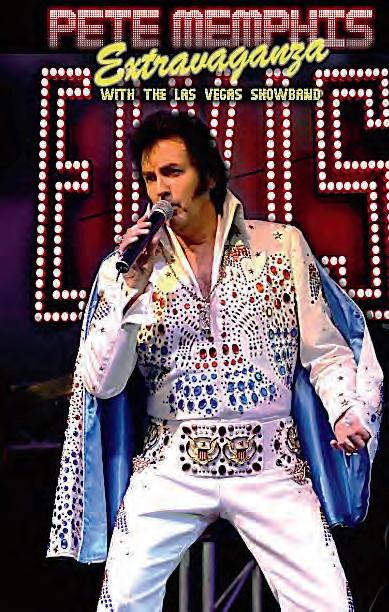
It was an unexpected and treasured bonus when he won a tour to Elvis’s home Graceland in a contest, but most of all he enjoyed meeting people along the way who had worked with Elvis.
Dining in Memphis with Elvis’s stepbrother, Billy Stanley, was a privilege and an absorbing insight into Elvis and his family.
Pete has had his own touch with his idol’s story, performing in the Elvis movie as a newspaper reporter.
When their two children left home, Pete and Lyn, were able to pick up parts in movies and commercials, and Pete graduated from an intensive acting course.
Pete uses his Seniors Card to enjoy life but is always squeezing in a little more – he rehearses in the shower.
In preparation for a performance, he will concentrate on fitness and diet, especially 24 hours before a show when he eliminates chocolate, ice cream, milk and especially coffee, which has a drying effect on the voice box.
And he has had some intriguing gigs – Bindi Irwin’s 13th birthday party at Australia Zoo, luxury cruise ships and supporting legends of Australian music
Pete Memphis in full flight as Elvis.
such as opening for Brian Cadd.
Pete has no script and still gets stage fright. Fortunately, he has Lyn by his side as his manager, but before he goes on stage, Pete Memphis gets into the zone by talking quietly reassuring himself.
With the popularity of the Elvis movie triggering more demand, Pete and Lyn have had to pass on some requests to other Elvis impersonators, but the opportunities they love to devote much of their energy to are performances for people with disabilities and seniors.


When I met Pete and Lyn, the crowd was singing along and some exuberant seniors got up and danced to their own choreography of Pete Memphis’s dynamic Elvis who is clearly aging extra well.
Garry Reynolds is an author who, as part of his rehabilitation after three strokes, has set out to capture life stories within the seniors’ community.








From the snowy Christmas card scenes of Cologne to the muggy outpost that was Darwin in 1958, there could not have been a greater contrast for the young MOCCO WOLLERT celebrating her first Christmas in Australia.
Certain times of the year are important, religiously or in terms of family and friends, and Christmas is one of the most important of those. Being separated from them at that time can be very sad.














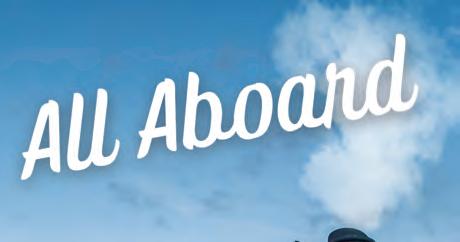



I had not thought about Christmas when I decided to migrate to Australia and join the man I loved. I flew into Darwin in August 1958, eager to embrace my new life. I was young and did not doubt that I would cope with whatever awaited me.
I came straight from Cologne in
Germany, a vibrant old city of culture, into a small, dusty, hot pioneer town, in the north of the Northern Territory. Even Australians, who mostly lived in the big cities such as Melbourne and Sydney, did not know much about Darwin.
They imaged that the Top Endwas a wild world of snakes, spiders and crocodiles. There were only two seasons The Dry and The Wet.
In complete contrast to the rest of my life, Christmas fell into summer in this strange new world. In all the heat and humidity, only the rains would bring
some relief, those tropical downpours that came as suddenly as they disappeared,














Often the rains did not come until December and every year I would pray that it would rain on Christmas Eve to give me that “German Christmas” feeling.
Our first Christmas in Darwin was difficult. Jingle Bells and a song about Rudolph the Reindeer seemed so frivolous. There was no way to escape the neve-ending repeat of those two songs wherever I went.

Christmas songs in Germany were more like hymns and they spoke of lakes
covered in snow and pine trees glowing with baubles and little festive ornaments. It was the Christ child who brought the presents on Christmas Eve, not Santa Claus.
Christmas night was a holy night, not party time like in Australia. I missed coming home out of the cold to a warm flat, sighing in contentment when hands and feet finally warmed.
I missed the smell of pine mixed with candles burning and the silent fall of snow. I missed my family.

My husband Niclas tried to make my first Christmas in Darwin enjoyable; he
even borrowed a record player and a few records so we could have music.

I would cry every time Bing Crosby sang about a white Christmas on the ABC, while the sun burned into our brain and perspiration ran down our arms.



Our Christmas tree was a scraggly branch of a ti-tree which looked as sad as I felt. I put two candles underneath, but the heat quickly melted them until they were no more than puddles that resembled yellow cow pads.















My few meagre Christmas ornaments took up hardly any space at all.


I looked in dismay at my Christmas tree from the bush and pictured in my mind the Christmas tree in front of Cologne Cathedral, covered in snow; my hometown would be white and cold.


On New Year’s Eve all the bells of the 300-odd churches in Cologne would ring loudly through the still darkness at midnight, like a concert by celestial bell ringers.


The biggest bell of them all, hanging in the high tower of the Cologne Cathedral, could be heard all over town.

Deep, booming sound would fill the night. Everybody would step outside from warm rooms on to chill balconies to listen to the bells and to call out “happy New Year” to all the neighbours, raising their glasses of champagne.
Our first New Year’s Eve in Australia was slightly different.
re was not ll to b e
There was not a bell to be heard.
Darwin Cathedral not
Darwin Cathedral did not even have a bell yet.
The night was hot and humid and had come early as usual in the tropics.
The night was hot and humid in tropics.
There were no streetlights and all was dark.
There were no etlights
b ert wn
hdtidihtfidh t
Niclas and his friend Herbert took their rifles down to the beach in front of our house and at midnight fired shot after shot enthusiastically into the air like two children who had been given permission to make a lot of noise.
We had no fireworks, so they tied gelignite sticks together, lit the fuse and threw the bundles as far as they could, down the cliffs at Nightcliff.
The noise was louder than any firecracker could have been and all our neighbours thought it was great.
I thanked our guardian angels that we all survived without damage to life and limb.
I was sad and yes, I missed my family, but it was also exciting to celebrate a wild night of bringing in the new year in my new life.
Mocco Wollert’s humorous and engaging book Bloody Bastard Beautiful is available at all good bookshops or email mocco.wollert@bigpond.com
Although more women suffer depression than men, it’s a sad fact that men are three times more likely to take their own life. JUDY RAFFERTY takes another look at the old nature vs nurture debate.

As a psychology undergraduate, fresh out of school, I was writing assignments on nature vs nurture in the gender argument – do male and female children behave differently because of the way we raise them or because they are biologically different?
The message in Psychology 101 was clear. If you want a good grade, form an argument supporting the view that differences are a result of nurture not nature. I got good grades.
In my late 20s, I was a representative for affirmative action for women at a corporate level. Affirmative action legislation in Australia was called the Affirmative Action (Equal Opportunity for Women) Act.
It aimed to improve the status of women in employment. It did this by requiring employers to promote equal employment opportunity for women by developing and implementing an affirmative action program. This caused disgruntlement among many employers.
As a keen women’s rights advocate, I went down in the workplace popularity stakes and therefore in the chances of promotion; ironic, when the plan was to
provide better career and progression opportunities for women.
Jump to my mid-30s with a preschooler and a toddler and quickly deteriorating ideologies about gender difference. My little boy would halt mid tantrum to watch something with wheels go by. If only I could re-write those university assignments!
Now as a psychologist I am very aware that men and women are different. The difference seems to be a result of a complex mix of nature and nurture. Men carry an
enormous burden of expectation. They are given a raft of standards to meet and many of these are both in opposition to each other and unattainable.
Men (and I am generalising) are expected to be strong in the face of adversity but also expected to be able to show their “feminine side” and to express and show emotion. I am not excusing males nor pitying them, but many men have not had the opportunity to introspect and communicate about emotions.
If you must cut off your emotions so
you don’t cry and look like a git, then how can you learn to identify your emotions so that you can express them?
Often male depression looks different to female depression and as such, psychologists treat it a little differently.
I am writing about this because, while rates of depression and anxiety are a little higher for women than men, there is another damning statistic that makes this difference irrelevant – men are three times more likely to die by suicide.
Men over 85 have the highest suicide rate in Australia.
Often there is a spike in depression in retirement. Depression does not go away as we age. One in 10 older adults have depression.
Psychological treatment for depression is successful and a good investment for a happy life and positive relationships.
Judy Rafferty is the author of Retirement Your Way, A Practical Guide to Knowing What You Want and How to Get It, at all good bookshops and online.

into building their superannuation? VICKI
at
Baby Boomers were sold the idea that if they amassed a certain amount of money, and achieved their goals, it would make them happy.
Most of us have figured out that this isn’t the case. We know that money doesn’t buy happiness.
Two in three Australians have experienced the pain of divorce, some more than once. Some people overachieve in several areas of their lives but have felt frustrated about how to find love and happiness.
A successful retired head- ofdepartment of a high school was completely at a loss about how to sustain a healthy relationship with her partner.
There is a yearning in each of us for connection with that one exceptional person but life is challenging.
We are expected to contribute, be perfect mothers and fathers, engaged grand-parents, available friends, and tender lovers.
We have to calmly juggle everything, balancing our lives while dealing with the annoying changes in aging bodies.
Even with these challenges, we are connected more now than ever through
social media and our communities, but when it comes to love we struggle to find it, express it, keep it, or untangle from it.
Human beings are optimistic, pessimistic, funny, troubled, enthusiastic, unsure, hilarious, kind, angry, disappointed, confident, shy, happy, sad, and joyous but most of all curious – about our lives, about possibilities and choices for the future.

Love offers choices for love, discovery, and change for those who are ready but happiness, like anything, must be invested in to build and sustain.
Many people are afraid to open their hearts to trust another person just in case they are misunderstood or hurt.
They are afraid that the stakes are too high, and there’s always the risk that if they love someone, they will be rejected.
Opening your heart to love another person takes courage. There is always the risk that love won’t work out and you will be hurt.
When difficult times arise, it’s easy to divert to self-blame rather than think constructively about what part you
have played in your love life. Be truthful but don’t over-state your part. Diving into blame, shame, or guilt will not solve anything and will take away from self-esteem.
If you blame your partner for all of the problems in the relationship, you will lose any chance of talking through the issue.
The truth is that one person alone is never responsible for a problem between two people.
Problems arise with each person playing some part in creating it.
Recognise that you have added something to whatever difficulties you are having. Accept that you can talk with your partner about these issues as a step along the path of growing together.
Most people want happy lives. They want to be happy in their relationships, their work, their friendships, and the way they learn.
Think carefully about what you would like to achieve in your life – what do you think would help you to be happy?
Think across every part of your life.
A retirement plan for happiness could start with these simple steps:
• Walk or exercise.
• Write a daily journal or begin a memoir.
• Take time for yourself every day, even if it’s just 15 minutes.
• Do something out of the ordinary for someone you love, remind them of their strengths, or do something kind for them.
• Do something creative for yourself — paint, dance, draw, sing or write.
Making goals for these things will help you to enjoy a balanced, happy life. You can choose to look for happiness even when things are difficult.
How many people have put as much effort and energy into their future happiness as they have
BENNETT looks
love and relationships in making a retirement plan for happiness.Vicki Bennett is the author of 100 Keys to Love. Visit vickibennett. com.au













AUSTRALIA’S retirement living sector is delivering age-friendly communities with person-centred services that will keep more older Australians happy, healthy and out of nursing homes, for longer.
Retirement Living Council executive director, Daniel Gannon, said Australia’s retirement living sector was ready, willing and able to deliver more affordable healthy ageing choices for more older Australians.
Mr Gannon said the design,
structure and form of age-friendly communities combined with good access to community and care networks provided the best way to significantly reduce two of the biggest risk factors leading to illness and hospitalisation – falls and depression.

“There’s plenty of qualitative and quantitative research from around the world to show that age-appropriatehousing in age-friendly communities not only supports healthy ageing, but that it makes for the most economically

sustainable health and wellbeing environment,” Mr Gannon said.

“The congregate housing model built into age-friendly community design can create economies of scale for more efficient delivery of community, health and aged care services.
“This means new models of care can be more easily integrated within age-friendly communities.”
Mr Gannon said another major benefit was the development of agefriendly communities in the places where people live can release home equity for cash-strapped seniors, while increasing the local housing supply for young families.

Noting most people’s preference is to “age-in-place”, the Productivity Commission said the vast majority of older people in private dwellings were likely to grow as the population ages: “to the extent that ageing in place substitutes for other accommodation
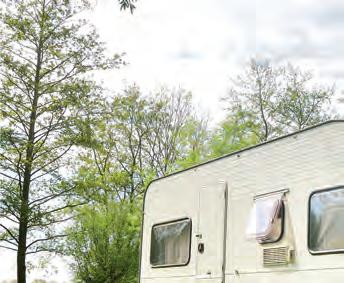

and care options that receive a greater government subsidy, it may also be aligned with the governments’ fiscal sustainability objectives.
“Although the care needs are typically higher for residential aged care, ultimately delivering home care requires much less public funding,” it said.

Mr Gannon said age-friendly communities and person-centred services delivered significant and increasing benefits to all Australian taxpayers, including less use of primary health care services and avoided hospitalisation (and reduced length of stay) for residents, as well as delayed entry into residential aged care.
Research undertaken for the RLC supports these findings and shows retirement village residents save governments more than $2.3 billion annually through reduced spending on health and aged care.
Most of us cling to the hope that we will remain living at home to the bitter end, but DON MACPHERSON explains, downsizing to a retirement village shouldn’t be confused with aged care.

meals supplied. On the other hand, retirement living, whether in a retirement village or an over 50s resort, usually starts off with fully independent living, albeit on a smaller floorplate than one’s former home.
Retirement living can transition to minor or increased home assistance, while still maintaining a significant degree of personal independence.

funded assistance is available to people still living in their “old” home, but what increasingly becomes apparent is that the “old” home is getting too big, and too hard to maintain, hence the need to downsize (the industry calls it “right size”) to retirement living accommodation.
People have often told us that they will never be moving into one of those “retirement places”.
“I’m going to be living in my home until I die,” they say.
On further inquiry it’s evident that some people confuse aged care with retirement living.
Often, they don’t truly understand what these options involve and what is provided. They fail to see the significant
benefit, indeed often the need, to move from the old family home to a different but more age and health appropriate form of accommodation.
Aged care homes are commonly the last stop on the journey of life. They are akin to a low-care hospital bed, where the care can be intensive and continuous.
You get your own room, with shower and toilet, but usually have all
WITH inflation projected to rise to 8 per cent, and the cost of living continuing upwards, households are looking to supplement income.
And the good news for pensioners is that they will be able to increase their part-time wage from $7800 to $11,800 without affecting their pension.

Here are five service-based businesses, all owned by women, with some ideas for finding a job to cash up for Christmas.
All are free to join and have benefits such as training and insurance cover.
1. HOUSE AND PET SITTING – With so many travelling, there is high demand for house and pet sitting services. Tasks include food and water top-up, litter box cleaning, handling emergency situations, and taking pets to the vet. Offer minding in your own home or in the pet’s home. A police check is $53. Training is free,
Many retirement villages facilitate in-home care, for a fee, which prolongs the independent nature of the living environment while providing an appropriate level of assistance to allow that to continue.





Government funded or supported assistance can also be available in retirement villages, and over 50s resorts.










This assistance allows residents to stay in their new home while getting the care they need.
Of course, Government or privately-
All of these options – aged care, retirement villages, and over 50s resorts – have their own specialist contracts. Each comes under separate legislation, whether state or federal, and sometimes a combination of both, and involves a significant financial outlay, with major long term financial consequences.


Proper legal advice should be obtained to fully appreciate what is being signed up for.
Don Macpherson is an expert in elder law at Brisbane Elder Law. Call 1800 328 952 or visit brisbaneelderlaw.com.au
insurance is provided. Baby boomers are making an average of $400 a week pet sitting with PetCloud, an NDIS registered company created by Deb Webber. Visit petcloud.com.au

2. BABYSITTING – Connect with parents looking for verified local carers for their children. Kiddo App, created by mother of two, Rebecca Dredge is available in major capital cities and holiday destinations. It costs less than $10 for a working with children check and Kiddo carers are making up to $300 a week with a few nights babysitting on the side. Visit kiddoapp.com.au
3. WASHING AND IRONING – A mobile laundry service founded by Susan Toft is always looking for reliable people who don’t mind washing and ironing, pickup and delivery from their own home. Visit thelaundrylady.com.au
4. HOUSEKEEPING – Become one of almost 100 housekeepers who help with light cleaning, tidying, changing linen, and folding laundry through a housekeeping service founded by Natalie Haddock and operating in Brisbane and Sydney. Visit getyouhousekeeping.com.au
5. COOKING – A cooking service company founded by Bek Daley offers a personal chef-type service without the need for chef qualifications. Great home cooks simply prepare meals prepared from a curated menu. Head office takes care of payments and shopping lists. There is an in-home cooking program for NDIS participants, to help gain confidence in the kitchen. Visit ih8cooking.com.au
Did you know melanoma diagnoses in Queensland reach up to 82 per cent above the national average?
Summer is here, bringing with it hotter days, longer daylight hours, and better conditions for enjoying the outdoors. As we pack away our jackets and reach instead for the short sleeves, now is the time to think about protecting our skin health and staying sun safe during the festive season.
The sun’s UV radiation is the leading cause of skin cancer, and we require sun protection when UV levels reach 3 or above, which can be all year round in Queensland, especially in summer, and even on cool or cloudy days.
At this level, just 10 minutes of unprotected sun exposure is enough to cause cell damage which leads to skin ageing, pigmentation and skin cancer – and you don’t need to be sunburnt to experience skin damage.
“It just takes small amounts of incremental sun – just being outside for a few minutes, driving your car, hanging out the washing,” says Professor David Wilkinson, Chief Medical Officer of the National Skin Cancer Centres.
Getting a skin cancer check at the start of summer can give you peace of mind for the rest of the season, and it can be beneficial to see a doctor before your summer tan masks the changes that can indicate skin cancer.
Keep an eye out for lesions that stand out from the others, sores that won’t heal, new or changing moles, and one or more of the ABC signs of melanoma:


Asymmetry: The two halves don’t match
Border: The edges are notched or uneven Colour: There are multiple colours
Diameter: The lesion is larger than a pencil eraser
Evolving: The lesion is changing
Firm: It feels hard to the touch
Growing: It has recently gotten bigger
If anything stands out, see your doctor straight away, even if you aren’t due for your follow-up check. However, many skin cancers are invisible to the naked eye.
Between professional full-body skin checks, you can self-monitor your skin for any new, changing or unusual lesions. Start by examining your body in a fulllength mirror, checking all visible skin on your front and back with your arms raised. Next, look at your underarms, forearms and palms, then your legs, toes and the soles of your feet. Skin cancer can even grow under your toenails! As the disease can develop anywhere on the body (even in places not exposed to the sun), use a hand mirror or ask a loved one for help examining your neck, scalp, ears, back and buttocks.
For high-risk patients, total body photography is recommended by experts in addition to your full skin check. It is the best method to detect skin cancers accurately and identify potential skin cancers as early as possible by monitoring changes over time.

A series of digital images is taken of your whole skin surface, and the technology automatically compares all follow-up photos with the corresponding baseline images to identify new and changing moles. These moles are quickly marked for follow-up evaluation by the doctor.
Full-body imaging is the most reliable means of revealing the subtlest skin changes and detecting skin cancer at its earliest stage when it is most manageable and requires least invasive treatment.
“With something as life-threatening as skin cancer, the earlier we detect it, the higher the chance of successful treatment,” says Professor Wilkinson.
You are at especially high risk if you are over 55, have light hair or light-coloured eyes, have a fair complexion, have a family or personal history of skin cancer, work outdoors or enjoy outdoor activities, or have ever been sunburnt or used a tanning bed. “Many patients have sun-damaged skin in Queensland, so they’re at high risk of skin cancer including potentially deadly melanoma, but a lot of people underestimate that risk,” says Professor Wilkinson.
During your full-body skin cancer check (recommended for all Queenslanders at least once a year), your doctor will thoroughly examine any moles, freckles or bumps with a dermatoscope, which is a special skin microscope that allows the doctor to see beneath the skin to identify suspicious characteristics.


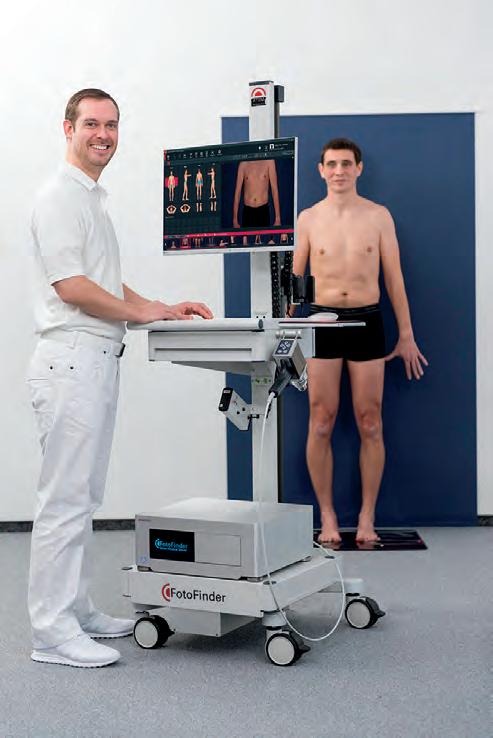
“Melanoma can grow very fast and may show no symptoms until the advanced stage,” says Professor Wilkinson.
“Special diagnostic tools are necessary to see beneath the skin’s surface to identify suspicious changes, which is why skin checks are important for early detection and can produce potentially life-saving results.”
Protecting your skin this summer can be as simple as applying SPF50+ broad-spectrum sunscreen to exposed skin, sticking to the shade, and wearing a hat, long sleeves and collared shirts. It is also recommended to avoid going outdoors during peak UV times (around 10am to 2pm).
“It’s important to take steps from prevention to detection in summer when UV levels are highest,” says Professor Wilkinson.
“Early detection through regular full-body skin cancer checks is the best defence. Our mission is to detect skin cancers in the early stages to minimise complex, and expensive treatments, and ultimately save lives.”
TIP #1: Apply sunscreen 20 minutes before sun exposure to allow time for it to be absorbed into the skin.

TIP #2: Use about seven tablespoons on the exposed skin over your entire body, remembering to cover your face, neck, arms, legs, shoulders and ears. If you aren’t wearing a hat, apply a swipe of sunscreen to your scalp, too!
TIP #3: An adult should apply at least one teaspoon of sunscreen to each arm and leg, and ½ a teaspoon to the face, neck and ears.
TIP #4: Reapply sunscreen every two hours when you are outdoors and more often if you are sweating or in water – even if the sunscreen is water resistant.
to cover your face, neck, arms, s and ears. If aring a hat, apply nscreen to your ult at poon of sunscreen nd and ½ a he face, neck and ly er y en ors n if you or in water unscreen is t.

It’s important to take skin cancer seriously and debunk some common myths so we can be better informed about our skin health and cancer risk.
MYTH: Melanoma only grows from existing moles.
FALSE: Skin cancer more often develops in new lesions on the body.
MYTH: Melanoma is the only deadly skin cancer.
MYTH: Squamous cell carcinoma (more common than melanoma) and other skin cancers can be fatal too.
MYTH: Darker skin doesn’t need sunscreen.
MYTH: Everyone needs sunscreen when UV levels are 3 or above because skin cancer grows on all skin types. Sunscreen protects cells from damage.
MYTH: Only sun-exposed areas of the body are at risk of skin cancer.
MYTH: Skin cancer can grow anywhere on the body!
MYTH: Sunscreen isn’t required when wearing makeup.
Constant rain has led to a significant increase in mould-related illnesses. TRUDY KITHER discusses the causes and symptoms.
Damp, indoor environments where organisms thrive can affect the health of those within.
Fungi and some yeast replicate by producing many spores that have become well-adapted to airborne dispersal.
They can stay airborne for long periods and deposit in your respiratory system. Smaller spores can reach your lungs.
However, they can also be inhaled, touched or created by moulds colonised within the body, especially the sinus and gastrointestinal tract, due to previous exposure. Mycobacteria is common in moisture-damaged buildings. With fungi, it releases smaller fungal fragments known to contain allergens and mycotoxins.

Mould illness originates in the body from exposure to biotoxins (mould) or toxin-producing organisms from food, water, air, or the mouth.
Biotoxins are of biological origin and produced by plants, animals, insects, and microorganisms are hazardous to humans when inhaled, ingested, or absorbed. Inflammagens are an irritant that produce swelling and inflammation by binding to receptors in your body.



Antigens are substances from your
environment, such as pollen, bacteria, chemicals or viruses, tick-borne illness or blue-green algae.
With a direct impact on your nervous system, symptoms can include sleep disturbance, cognitive impairment, trouble finding words, fatigue, brain fog, nerve pain or ice-pick pains, static shock, chronic pain, gastrointestinal disorders and breathlessness.
You cannot achieve wellness with chronically circulating mycotoxins. Optimising your detoxification and elimination pathways is the first step to
restoring your health. Not doing this first will lead to toxicity in your gut and constipation.
Constipation leads to the toxins remaining in your gut for much longer, damaging it, and then being reabsorbed in your body to circulate again.
Mycotoxins also damage beneficial bacteria, causing a cascade of inflammatory responses in the body. Vagus nerve damage and changes to the autonomic nervous system are the result.
The other is Chronic Inflammation Response Syndrome (CIRS), a chronic multi-system inflammatory syndrome.
It starts with exposure to a biotoxin (such as indoor dampness but could be other biotoxins) and then disrupts multiple body systems.
The impact on the immune system is suppressed immune activity. Signs include increased hypersensitivity, asthma, allergic reactions and a reduced ability to fight infections.
There are many symptoms of CIRS–joint pain, morning stiffness, weakness, a decreased ability to assimilate knowledge fully, aches, light sensitivity, headaches, vertigo, unusual skin sensitivity, tingling, cough, excessive thirst, urination,
confusion, memory impairment, static shocks, sinus congestion, breathlessness, watering eyes, disorientation, metallic taste, poor concentration, red eyes, blurred vision, night sweats and mood swings, post-nasal drip, sneezing, rhinitis, chronic sinusitis, nasal polyps, swollen lymph glands, ear popping, bumps at the back of the throat, hay fever, and allergies.

It can also be iron deficiency anaemia, irregular heartbeat, food sensitivities, sweet cravings, abdomen pain, irritable bowels, irritable bladder, kidney inflammation, bacterial infections, fungal infections, “jock itch”, burning lungs, heaviness in the chest, colds go to the lungs quickly, sensitive or itchy skin, burning sensations and flushing.
The good news is that once the illness is recognised, it can be treated safely and effectively with specific, herbal antifungal treatments via a step-by-step targeted approach.





Always ensure you speak with a qualified and experienced naturopath who can take you through the correct steps safely and effectively.

Trudy Kither is a naturopath, herbalist, and iridologist at Nature’s Temple Wellness Clinic. Visit naturestemple.net
Great news for the women who struggle to find a great fitting bra. Our new bigger brighter store has enabled us to expand our range to include sports bras, full figure and maternity as well as our traditional post mastectomy wear. Our goal is expertly fit your bra so you feel amazing in your clothes. Visit our new store and experience the Tracey G service.



If your gums bleed when you brush or floss your teeth, you are not in perfect health. RICHARD JOHNSTON explains that it is a clear sign that the body is more susceptible to disease.
Can you imagine taking an oldfashioned nail brush, gently rubbing it across you finger nails and thinking it is okay if blood starts to appear?
Or if you simply pressed on any area of your body and saw blood seep out?
I imagine that if either of these happened, you would be making a quick visit to your doctor or an emergency department – yet thousands of Australians seem to think it perfectly fine if their gums bleed.
It is not, and here’s why.
Periodontitis or periodontal/gum disease as it often referred to, is a chronic inflammatory disease that compromises the integrity of the tooth-supporting tissues, that is gingiva, periodontal ligament and alveolar bone, collectively known as the periodontium.
Inflammation, literally meaning “in flames”, is one of the body’s defence mechanisms to kill germs.
Inflammation is a great thing when it is harnessed for short periods of time, such as when you cut yourself, but when it is sustained or even permanent as with untreated periodontitis, the effects can be
deadly. Germs that cause cavities and gum disease don’t stay put and can spread throughout the body, especially if your immune system is weak, and infections can be serious and end in hospitalisation. But don’t take my word for this. Over the past 20 years the broader medical community has come together and conducted thousands of studies on

the topic. Common sense tells us that the body is not departmentalised, but beyond this the research is conclusive
It has directly linked the following medical issues with oral disease: cardiovascular disease, diabetes, respiratory disease, stroke, kidney diseases, peripheral vascular disease, dementia, adverse pregnancy outcomes, aspiration pneumonia, stomach ulcers, oral cancers and obesity.
If there is a history of any of the above in your family and you have bleeding gums you are at a greater risk of developing these problems.

This list includes pneumonia and respiratory diseases – exactly what we are witnessing with the most recent version of a Corona virus disease.
Since the last major outbreak back in 2012, referred to as SARS, universities around the world have linked susceptibility to catching Corona virus to the reduced immune response caused by periodontitis.

The same would have to be true for the latest attack of Corona virus – Covid 19.
So, if your gums are inflamed or bleed
when you floss or brush, then you need to seek help.
Your regular dentist is well qualified to diagnose your individual situation and many can treat this disease.
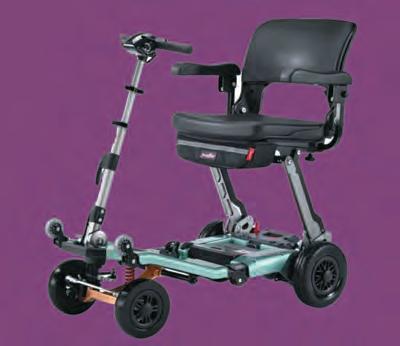







In certain cases, your dentist might refer you to a specialist periodontist for treatment, but whatever the outcome, you should seek diagnosis immediately.
Finally, did you know that wearing dentures actually shortness life expectancy by 10 years?

If untreated, the natural results of periodontitis is the loss of tooth which eventually can lead to the total loss of all teeth and the need for a denture.
Many studies have been done and show this group of people on average live 10 years less than people with a healthy mouth – let’s not let it get to that.
And this is all The Bleeding Obvious (a trade mark of Beerwah Dental Group) where you can pick up a free copy of the Dental Board’s report Links between Oral Health and General Health.












Dr Richard Johnston is practice principal at Beerwah Dental. Visit beerwahdental.com.au

AFTER visiting her sister’s home at Halcyon Greens, Gillian Stevens fell in love with the idea of moving to a luxury lifestyle community.
The only problem for her and husband Alan was the Gold Coast location.
“A lot of these communities are built outside of the city because you need so much land. We’ve always lived on the northside of Brisbane and we didn’t want to move away from the region,” Gillian said.
“I’m also not a very confident highway driver, so as much as Halcyon Greens is a beautiful community, I couldn’t see myself living there because I would have to drive on the M1 to get back to the northside when I wanted to visit.”
The Aspley couple then heard about Ingenia’s new community at Burpengary East, a suburb just 10 minutes further north. They put a deposit down on a home.

“We were never really 100 per cent happy with what they were offering,” Gillian said. “And then one day we went along to a coffee morning and a lady told me that Halcyon Communities were building one in the area.”
“I saw what my sister has and the quality of Halcyon Communities, so it was serendipitous the way it happened. I feel like we’ve gone full circle.”
Gillian said she and Alan were looking
forward to the social aspect of community living.
“We live in a lovely cul-de-sac here in Aspley and we have lovely neighbours, but they are busy with their families and I think we could drop dead and nobody would miss us,” she said with a laugh.
“We’re looking forward to being around people in our age group and who are in a similar position to us.”
They were also impressed by the fact the homes have patios which make it easy to chat and connect with neighbours.
Gillian said she had witnessed firsthand how life-changing moving to Halcyon Communities had been for her younger sister Julie.
“Julie has taken up art again and now runs the community’s art class,” she said.
Gillian and Alan were also keen to make the move while they were still active and mobile enough to enjoy the lifestyle.
“We wanted to be the ones who made the decision to move,” she said.

SAYING goodbye to good neighbours can be a consideration when right-sizing from a large family home to an active over-50s lifestyle resort.
But in the case of Larry and Irene Clifford, who recently moved into Amber by Living Gems in Logan Village, their neighbours moved with them.
“We lived on MacLeay Island in Moreton Bay which we loved, but it was very difficult for family to visit because they’d have to drive to Redcliffe, find parking and catch the ferry,” Larry says.
It was the Cliffords’ daughter who first told them about Amber by Living Gems.
“I had no idea that a place like this existed!” he said. “As soon we saw the display home we fell in love.
“As soon we saw the display, we knew this was the place we wanted to call home. Irene was very excited and keen to make the move before we’d even toured any of the homes in the resort.”

The next day, Larry and Irene told their neighbours on MacLeay Island neighbours. They had toured the resort and were making their own move to Amber by Living Gems.
Best of all, family is a lot closer. In fact, Irene’s sister lives in the same street.
Larry and Irene have six children and 18 grandchildren now living within 35 minutes drive.
MARY Haddon has always thrived on competition, challenges and an active lifestyle.
“I gave up playing golf at 101 and only changed to a golf cart when I turned 85. Walking the course is still the best way to play golf” the spritely centenarian says.
And she is still a regular visitor to the golf club for lunch.
“I celebrated my 102nd birthday there this month. It is a special place” she says.
Mary was born in the Southern Highlands in 1920. Her mother died when she was very young, so she became
an expert in cooking and cleaning, and quickly found work as a Mother’s Help when she left school.
During the war years, Mary worked at Lysaght, assembling Owen guns. She also met the love of her life, Don. They married in 1942, and three years later had a son, John.
Throughout her life, Mary has been up for a challenge. In Sydney, she got a taxi licence when her cousins were short of drivers at their transport company.
“My Ford Falcon and I were a great team for eight years,” she says.
“It’s a nice drive, with hardly any traffic lights. It’s easier now to visit and babysit for our kids – which we do a lot,” Larry says.
Having moved from a large quarter acre block, Larry and Irene are loving the semi-rural feel of Logan Village.
They’ve downsized their property and no longer need to worry about looking after large gardens. Instead, they’ve bought some raised garden beds where they grow a range of produce including tomatoes and parsley.
They’ve also freed up their time to pursue their hobbies and socialise.
“I’ve taken up the guitar and Irene makes candles and soaps. We also spend a lot of time entertaining,” Larry says. Visit gemlife.com.au
In 1982, Mary moved to Queensland and she kept up the pace, playing tennis, golf and bridge.

For her 80th birthday she tried skydiving and when she stopped driving at 98, Suncare transport services saw to it that she could continue to play golf and get out and about.
Mary attributes her longevity to two main things: Happiness and good genes.
“My Aunt Hetty lived to 108,” she says. “It’s about staying active and doing everything in moderation.”
Visit suncare.org.au
Whether you spend your summer gardening, golfing or playing with the grandkids, being active is more fun when your body moves easily. TRISTAN HALL shows how a simple stick can help maintain your range of motion.
Abroomstick may not sound like a piece of exercise equipment, but it can help you move in a slow, even and controlled manner.
With the right exercises, you can improve balance, proprioception (understanding where your body is in space) and flexibility.
Before you start, remove the brush from the broomstick. Alternatively, use a long piece of dowel or purchase specialised exercise sticks online.
These come with silicon grips for your hands but a simple piece of dowel that fits your hands comfortably is fine.
Avoid overly long sticks which can be unwieldy.
The idea of working with sticks has a Vietnamese history. Army officer Master Mai Bac Dau from South Vietnam spent four years in a Communist prison camp where he developed a set of 12 exercises to help him improve his health and survive his imprisonment.
This system became known as Longevity Stick Art (LSA). In 1995, Master Dau arrived in the US and introduced the longevity stick which became popular with retirees in particular.

These days people gather in parks in England, France, Canada and Australia to practise longevity stick.
The first exercise in the longevity stick system is rotating the shoulders. Stand with your feet shoulder width apart. Hold the stick in front of you with hands near the end of the stick.
Breathe in and lift the stick above your head and as far behind your head as is comfortable.
You may reach your middle back. Arms will be at full length but do not lock the elbows.
Repeat this movement slowly for a few minutes. Remember to breathe.
Another longevity stick movement is sitting on the heels. Stand with your feet about a foot apart. With arms straight, hold the stick in front of you.
Raise your arms in front to shoulder height. At the same time, squat back towards your heels as far as comfortable, then lower arms as you stand up.
Repeat this movement for a few minutes in a fluid manner.
Western exercise programs also use sticks to assist you with flexibility, mobility and balance.
When you are doing squats, hold the stick in front of you at shoulder height to help your stability.
The stick can alleviate tight chest muscles which cause you to hunch forward.
Hold the stick behind you with arms facing the ground.
Raise arms and lift the stick upwards behind your middle back. Hold that position for 10-20 seconds. Repeat 10 times.
Sticks programs can be tailored to address individual needs.
Tristan Hall is an exercise physiologist with Full Circle Wellness. Call 0431 192 284 or visit fullcirclewellness.com.au
THE cruise ships are back and everywhere are stories that the world’s oceans are ready for the masses again. Many have missed the cruising lifestyle and being pampered passengers.
I like cruising and have been on four cruises ranging from three to seven days, but I can also see where the holiday lifestyle and abundance of food and drink can add to waistlines while at sea.
When asked, I give the following advice to anyone who is about to walk the gangplank: Make sure you eat all or at least the majority of your meals in the dining rooms.
The variety and quality of the meals in the dining rooms is amazing. The nature of the way the courses are served and the measured meals mean you will have plenty to eat and drink.
The buffet is often more accessible, and meals are served for a much longer period, but it is too easy to
overstay in the buffet area.
After all, there is plenty to do on board rather than spend too much time in the buffet.
Use the stairs onboard if you can. This is a perfect opportunity for you to burn up some calories and get in some incidental exercise.
Of course, if you have mobility issues, the lifts are very convenient, but it you are capable, use the stairs.
Lastly, go to the onboard gym once a day. After all, you don’t have to travel too far. If the gym is not your thing, then do a few laps of the upper deck and get some sunshine at the same time.
And there you have it. Three ways to help you enjoy your holiday on board, and keep your waistline from bulging.
I admit that I do follow my own advice and actually lost a couple of pounds on my last seven-day cruise.
Tom Law is author of Tom’s Law Fit Happens. Visit tomslaw.com.au
● Fixed rate with no hidden fees

● Fully licenced Property Manager

● Regular routine inspections with photo reports
● Flexible owner payments, and same day statements
● Strict property application processes with thorough tenant checks
● Limited number of managed properties to ensure top quality service
PETS MORE than 60 per cent of retirement community residents see pets as a key source of emotional support.
Interacting with animals has been found to lower blood pressure and reduce levels of the stress-related hormone cosrtisol, while also boosting mood.
A pet can not only reduce loneliness and depression, but improve cognitive impairment in those with dementia.
They also encourage exercise and help with rehabilitation, such as stroking the fur particularly among stroke patients.
Researchers have also found that petting or talking to dogs can lead to improved cardiovascular health, and both cat and dog owners can experience fewer minor health concerns.
Benefits to mental and emotional wellbeing have also been identified.

Animals improve psychological wellbeing and social interaction for those who live alone; and improve social function and impulse control.


Studies have found pets buffer the impact of stress, increase self-esteem and reduce anxiety.



And there are many abandoned pets waiting to help their new owners reap the benefits.
Mr Waffles is a male long hair chihuahua cross.

He has recently been shaved, so looks quite unique. Aged 12, this sweet, but nervous, gentleman is spritely for his age and with time, would adore becoming your little shadow.
He is looking for a home with another gentle pooch and would be perfect for someone who is home a lot and give him plenty of affection.
THE benefits of pet ownership are well recognised and there are pets who need owners too. RSPCA Queensland has more than 47,000 animals arrive each year –strays, surrendered by an owner, rescued by the Animal Ambulance, or victims of cruelty. All deserve a second chance. Meet:
Licorice is a male domestic short hair aged three years and three months.
Handsome Licorice loves watching the world go by on the windowsill and adores a good chin scratch. He has the sweetest nature and also gets along with other feline companions.
He loves nothing better than curling up on the couch at night.
He is desexed, microchipped, vaccinated, worm and flea treated. Adoption price: $145
If you can offer Mr Waffles a loving retirement home, apply online to adopt this little gentleman.
Visit rspcaqld.org.au/adopt
Licorice does need a special food diet which is easily managed, but he’s an amazing cat that will be sure to fill your heart with love every day. He is one of the favourites among staff and volunteers at the RSPCA.

He is desexed, microchipped, vaccinated, worm and flea treated. Adoption price: $165
If Licorice sounds like a match for you, apply online to adopt him today. Visit rspcaqld.org.au/adopt
To adopt, apply online rspcaqld.org.au/adopt or call the RSPCA adoption line 1300 364 443
Greenwood Forest Glen has already taken over-50s community living to a whole new level, but now with our Stage 4 release, we’re reaching new heights, quite literally. That’s why we’ve dubbed this exclusive release of 31 residences ‘The Heights’.
These elevated blocks with a choice of luxury single-level or double-storey homes with lifts, sit overlooking our 5-hectare private rainforest reserve and with views of the Blackall Ranges.
In every way, these homes reflect the Greenwood philosophy that living in harmony with nature is intimately linked to health and vitality, and it flows through everything from the connected native gardens to the expansive community orchard and vegetable plots.

So, living at ‘The Heights’, you’ll not only enjoy all of the community features and facilities that have made Greenwood a favourite among active and social over 50s, but you might also feel a little bit special.



TICKETS are on sale now for the strictly limited season of Moulin Rouge! The Musical.
The award-winning musical brings Baz Luhrmann’s revolutionary film to life onstage, remixed in a new musical mash-up extravaganza that is wowing audiences across the globe, from Broadway to the West End.
The musical has all the favourite
songs from the movie such as Your Song, Roxanne, Come What May, and Diamonds are a Girl’s Best Friend, as well as new additions from artists including Katy Perry, Beyonce and Adele.

Queensland Performing Arts Centre May 16-June 11, 2023
Tickets from $69 + booking fee. Bookings qpac.com.au or call 136 246 Visit moulinrougemusical.com
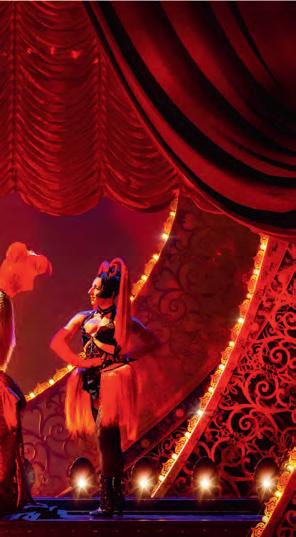

ITS MAGIC BRISBANE’S annual immersive light and sound spectacular, The Enchanted Garden, returns to Roma Street Parkland with a stunning display of holograms, lasers, projections, lights and soundscapes.

Visitors will be guided through an interactive narrative featuring one of the Parkland’s smallest but most famous residents – the Eastern Water Dragon.
The installation’s self-guided narrative will take about 30 minutes to complete, with entry every 15 minutes from 6.30 pm, although visitors can stay as long as they like.
By day, the Dragons guard and protect the park and its visitors. By night, they magically transform, taking on the colours and characteristics of the park’s natural elements: water, trees, rocks and flowers.
The Guardians appear as giant holograms, revealing the secrets and stories of The Enchanted Garden as visitors explore, then unite in a Shadow Sculpture in a fitting finale.
With tens of thousands of twinkling lights dotted amid world-class technologies such as interactive projection mappings, holograms, and lasers, The Enchanted Garden is an unforgettable journey.
Food trucks will serve snacks and
meals 4pm-9.30pm daily at Roma Street Parkland’s Celebration Lawn and the Garden Room café offers extended trading hours and dinner packages.
Presented by Royal Caribbean, the event is produced by Roma Street Parkland and Brisbane City Council. A portion of proceeds will benefit the Lord Mayor’s Charitable Trust.
Roma Street Parkland November 25-December 21, 6.30pm9.30pm. Tickets $7, exclusively through Ticketek. Visit enchantedgarden.com.au
IN A salute to the BBC Proms Concerts of London’s Royal Albert Hall, A Night at the Proms Spectacular is coming to Brisbane, bringing a promenade of formal special guests for an evening of magnificent entertainment.

















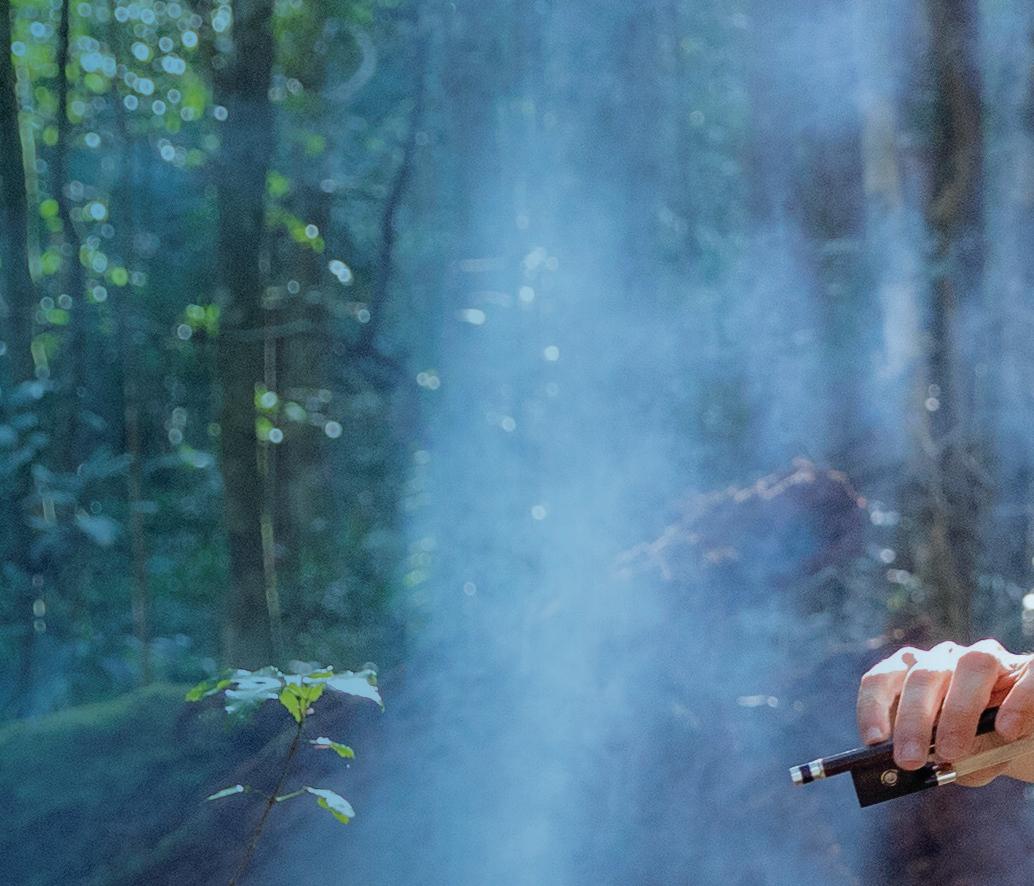














Join one of Australia’s most multitalented performers, Paul Martell, the Gala MC as he presents Opera Australia stars, a pipe band and The Blue Danube Orchestra under the baton of conductor Glenn Amer, to evoke the sheer exuberance of A Night At The Proms
As well as well-known favourites Rule Britannia, Jerusalem, and Land of Hope and Glory, the program includes the
greatest love songs of all time such as Love is a Many Splendored Thing, Mario Lanza’s The Loveliest Night of the Year, Stranger in Paradise and selections from South Pacific.


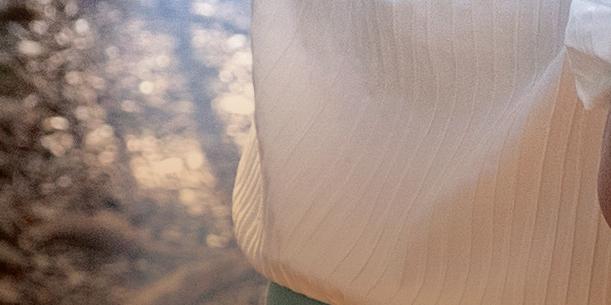
The City of Brisbane Pipe Band salutes the Royal Edinburgh Military Tattoo and with the orchestra, performs Amazing Grace, Skye Boat Song, Scotland the Brave and the magnificent Highland Cathedral.
The show is two hours and 40 minutes with a 20-minute interval.


RPAC Concert Hall, Middle St, Cleveland. February 17, 7pm
Tickets $95, concessions $89, groups 10+ $85. Bookings call RPAC Box Office 3829 8131 or visit rpac.com.au

EXPERIENCE the seasonal feel-good film Love Actually in a whole new way, as the Queensland Pops Orchestra provides the soundtrack live.

BAFTA award-winning Craig Armstrong’s evocative score reaches new heights with the live orchestra performance.

The ultimate rom-com is transformed as the film favourite is projected on a huge screen while the orchestra plays to make it an extraordinary live music experience.
Great Hall, Brisbane Convention and Exhibition Centre, December 10, 4pm
Tickets from $60. Bookings premier.ticketek.com.au

When I was a kid in the early 1960s, my big brother was given a game called Heads and Tails for Christmas which, as the name suggests, involved matching the pictures of people in national costumes from around the world.
There was a little Dutch girl in clogs holding a tulip, a German boy clad in lederhosen, a Zulu warrior, an Aladdin-style Arabian in harem pants and vest, an Eskimo beside his igloo, and so on – you get the picture.
Although my brother wasn’t wildly excited by the cards, he did resent the fact that I took them from his drawer and played with them endlessly. I believe that’s where my fascination with the world and travel began.
It continued at high school, where I was fortunate to have a well-travelled French teacher who was Armenian-born, English-raised, and Sorbonneeducated, and who happily sprinkled entertaining stories of
her life’s adventures into the lessons.

When she gave me a wellworn copy of the Paris Match with a picture of the Eiffel Tower on the front cover, I thought all my Christmases had come at once. I pored over that magazine for months, dreaming of faraway places.
Finally, in 1978, it all seemed possible. Rather than investing in the great Australian dream of home ownership, we booked one-way tickets to London. As one wise, old friend put it, “why buy a castle when you have a world of castles to visit?”.

Strangely, the cost of that one-way ticket which seemed an enormous amount at the time, is about the same as we pay today – or were paying pre-2020.
The Qantas jumbo dwarfed the Brisbane airport terminal –the first had flown into Brisbane only seven years earlier.



First stop was Darwin. When the overhead lockers flew open spilling contents into the aisle, we
just accepted that this was landing procedure – until it was announced there would be a delay as the rough touchdown had caused some damage.
Finally, Australia disappeared into the slipstream and after a stopover in Bahrain, we landed at Heathrow on a freezing March morning.

There were four of us and, clinging to suitcases fresh off the baggage retrieval system at Heathrow – a description that came courtesy of Monty Python, we stood in the terminal looking numbly at each other while wondering what to do next.

The dream had been to fly to London, buy a van and go to Europe, and hadn’t really been developed much beyond that. Finally, someone had the bright idea that we should find a hotel and be free of the luggage.

But where? Memories of the 1972 comedy The Adventures of Barry McKenzie, were still fresh: “Let’s try Earl’s Court. It’s Kangaroo Corner.”
We found a phone box with massive phone directories inside, chose a hotel at random and booked before moving on to how we were going to find it. The London A-Z would become a most valuable tool, along with the Tube map.
I knew it would be cold, so I had packed my Queensland winter sweaters, blissfully ignorant of the true meaning of freezing. Nothing in my 21 years had prepared me for the bonechilling winds biting London.
There was still a day ahead of us after finding the dodgy hotel in Earls Court and dropping off the bags, so we immediately set off in search of overcoats and luckily, with the English smelling Spring in the chill air, there were plenty of sales.
That our jackets were identical wasn’t a concern. They were warm and nobody knew us in this huge city that, at the time, had the same population as the whole of Australia.
Next stop was finding wheels for the grand European adventure, so it seemed as good a time as any to check out the campervans parked around Australia House in the Strand. We hadn’t wandered for long when we got chatting to a Western Australian couple in a white Volkswagen Kombi.
It had Dutch registration and the steering wheel was on the left which, we decided, would work well as it was destined to spend the summer on the
Continent. It did mean, however, that the driver who drew the short straw would have to come to grips with changing gears with the right hand while negotiating the frantic left-hand drive streets of central London.

An hour later, after working out how to turn the first of our prized American Express traveller’s cheques into cash, the Kombi was ours.
Despite the crazy daze of it all, we were optimistic, and stopped to buy the tent and sleeping bags that would see the van become a home for four for the next six months. Not a bad effort.
It was late afternoon and dark when we returned to the hotel and flopped on to the dubious, but warm, bunk beds. One by one we dropped out of the self-congratulatory conversation into a deep sleep.
And so ended the first day of a lifetime of being torn between the comforts of home and exploring the globe.



SCARS have the strange power to remind us that our past is real, wrote American author Cormac McCarthy. This author certainly has plenty of them. I am sorry she had such an awful childhood and I really hope she found writing the book cathartic. While memory is the diary that we all carry about with us, most of us have an imperfect and incomplete recollection of our lives. The almost hour by hour recollection of this author’s life was completely impossible to countenance. I found the book unreadable – too much detail and too lengthy. It seems that there are too many people who feel they have to inflict on the poor reader a book about a less than perfect life.
SUZI HIRSTYET another self-published book filled with sadness heartache, and abuse. The sins that her parents inflicted on Mikki (previously Mavis) lasted and coloured her whole life from childhood through to adult life.


John, her husband was totally in love with her and devoted his life to trying to make her whole. I think he must have been the most patient, loving husband and saved Mikki from herself so many times when the darkness overtook her and sent her spiralling.
We all have a story in us, some harder than for others, but do we write books about it? No. The book is long and I struggled to pick it up and finish it!
JOHN KLEINSCHMIDT JAN KENT
JAN KENT
THIS is a perceptive and thought-provoking book, giving the reader a greater insight into the long-lasting and deep-seated effects of abuse in childhood.
The author has courageously told her story which made it difficult, at times, to become enmeshed with her family and feel their pain. She has told this story to not only help herself, but also others who are holding similar secrets, unable to open themselves to the world.
The author admits she “writes as she talks”, which was jarring at times and while I have great admiration for authors who self-publish, it does make attention to detail and rigorous proof-reading more difficult. Throughout the book it is obvious that Mikki Cooke has put her heart, soul and life into this book – she is to be commended for her efforts. Mikki is a remarkable woman – a true survivor.

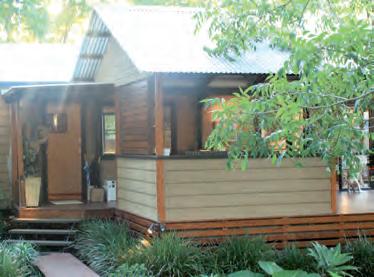
Mavis Barnes began life in a home that offered neither love nor safety. In 1974, she changed her name and with her husband and young family came to Australia to silence the memories of betrayal in the slums of post-war England. Clinging to the adage “from little acorns mighty oak trees grow” she writes of a time when society in both England and Queensland, lived to a different set of values. Her story covers changes down the decades. Despite her self-sabotage as she searches for love, Mavis develops a sense of self through her writing. She dedicates her memoir to those who give shelter and “believe in us until we can believe in ourselves”.
THIS memoir is a remarkable story of survival by a child who was little more than a slave in a loveless home in England to become a loving, nurturing mother and wife in Australia.
Mavis Barnes, the oldest child of six was abused in almost every way, traumatised by parents that showed her only the worst side of human nature and expected her to take responsibility for her siblings, resulting in a broken education and significant childhood trauma.
Mavis finds then destroys her self-belief many times before marrying a loving husband, changing her name to Mikki and migrating to Australia where she found a better life.

This book is well written, a page turner that, in turn, lifts and dumps the spirits of the reader as it unfolds.
AT the age of 76 Mikki Cooke self-published her memoir of horrific physical, emotional and sexual abuse during childhood.

The lifelong effects of early developmental trauma on herself and her siblings are vividly described.
Unresolved memories, deep feelings of insecurity and a fragmented disturbed personality provoked a lifelong search for love, security and a deep hunger to be a happy, whole and real person.
The love of her beautiful husband, doing a university degree, becoming a yoga teacher, psychotherapy, friends, family, feline and canine friendships have helped her journey to wellness which has taken more than 50 years. Well written and great book cover artwork as well.
Well done, Mikki. 8/10
I FOUND this a difficult book to read and hard to review. It is hard to fathom that two adult parents could be so devoid of affection and basic care for Mikki and her siblings. I felt anger that there were so many times in her childhood when intervention could have happened but then again, this still happens to children here in Australia, where innocent children are abused and returned to their dysfunctional families. The media reports such cases in graphic detail.
It is most of all a story of survival helped in no small way by the support of her indomitable husband John. Mikki’s story is a testament to the human spirit and its longing for learning and fulfillment. So many have a far from ideal childhood and if it encourages just one person to work through his or her childhood demons, then it will have done its job.
As a profound example of trauma in childhood “The Hunger” should be inspiring reading for anyone with an interest in working with children and family trauma.

1. Who wrote the play, As You Like It? 2. The Bulls represent which state in cricket? 3. Which bodily organ is affected by macular degeneration? 4. In which ocean are the Cocos (Keeling) Islands? 5. What relationship to you is your son’s wife? 6. On which continent did the Mayan civilisation live? 7. Express 25% as a decimal.



8. Who played the role of Hans Solo in the 1977 film Star Wars?
9. What emotion is associated with “seeing red”?


10. What word is closest in meaning to “munificent”: generous, hungry, lonely?
11. Which is the common name for ascorbic acid?
12. Two statues of which animal “guard” the doors to Brisbane City Hall?
13. What is the highest legal speed on any Queensland highway?



14. What would a German woman usually do with a dirndl?

15. What supermodel had the nickname “The Body”?
16. In chess, what piece cannot move backwards?

17. In TV, what does “sitcom” literally stand for?

18. Who was the first Australian Prime Minister with the first given name “Robert”?
19. On a meteorological map, what weather is likely when the isobars are close together?
20. What kind of living thing is a “roughie”?
comedy; 18. Robert Menzies; 19. Strong winds; 20. Fish.
Answers: 1. Shakespeare; 2. Queensland; 3. Eye; 4. Indian; 5. Daughter in law; 6. North America; 7. 0.25; 8. Harrison Ford; 9. Anger; 10. Generous; 11. Vitamin C; 12. Lion; 13. 110 km/h; 14. Wear it; 15. Elle Macpherson; 16. Pawn; 17. Situation
1 A few returning from deployment like skirt(4)
4 Cleaner opposed war after experiencing a conversion(4,6)
9 Spiritual meeting, one called initially in bishop’s office(6)
10 Pole placed by Telstra out of line has shocking effect(8)


11 It’s used to open special book published for learners(8)
12 Scapegoat mostly stood back, for example(6)
13 Small springs, covered with oil, may be grubby(10)
16 Monkey going after one small bird(4)
17 Small research centre set concrete(4)
19 One who ridicules fault in items made in China?(3,7) 21 Travelling salesmen not losing heart in a long time(6) 23 Case nearly finished off a star lady-killer(8) 25 Staff rigged boat on east side of one Canadian lake(8)
Connected individual holding nothing back(6)
Fault initially connected with light plane reduced aviation schedule(6,4)
Punchers violated laws(4)

Freeze one cup filled with ether primarily(3,2)
Wayward teens, occupied at the centre, become anxious(5,2)
Powered vessel passed water snake in strait(9)
American living in Illawarra can’t broadcast action in a swimming pool(10,5)


Fruit and vegetables cultivated on both sides of river(5)
Understanding about fractional measurement is lacking(7)
Treated green extract tipped over is powerful(9)
Desired ambition and glory made out in greeting(4,5)
Sends word, informally, to read the riot act(5,4)

Seal applied to the outside of metal material used to make flags(7)

One living in country residence without additions(7)
Yell out following silence(5)
Record not included in lovingly remastered records(5)
words: Good
words: Very good
words: Excellent
ACROSS
Type of hat (3)
Pre-evenings (10)
Containers (7)
Most wealthy (7)
Businesses that sell goods (9)





Look for (4)
Giving an alternate name to someone (10)
Scottish loch (4)
Downtime (4)
Symptomatic (10)
Insects (4)
Making loud and confused noise (10)
Wetter in terms of weather (7)
General style of cooking (7)
Expert (10)
Allow (3) DOWN
In a logically consistent manner (10)
Related to government (9)
Male angler (9)

Noblemen (5)
Most pleasant (6)
Very fat (5)
Location (4)
Quit (6)
Valuation (10)
Things causing annoyance (9)
Article expressing editor’s opinion (9)
Relating to elementary particles (6)
St Francis of — (6)
Combine (5)
Rocky stuff that forms a reef (5)
— and cons (4)
Using the nine letters in the grid, how many words of four letters or more can you list? The centre letter must be included and each letter may only be used once. No colloquial or foreign words. No capitalised nouns, apostrophes or plural words ending in “s”.
Complete the list by changing one letter at a time to create a new word at each step. One possible answer shown below.




 Mt Gravatt Retirement Community 1748 Logan Road, Mt Gravatt QLD 4122
James Ommaney Retirement Community 146 Capitol Drive, Mount Ommaney QLD 4074
Compton Gardens Retirement Community 97 Albany Creek Road, Aspley QLD 4034
Mt Gravatt Retirement Community 1748 Logan Road, Mt Gravatt QLD 4122
James Ommaney Retirement Community 146 Capitol Drive, Mount Ommaney QLD 4074
Compton Gardens Retirement Community 97 Albany Creek Road, Aspley QLD 4034